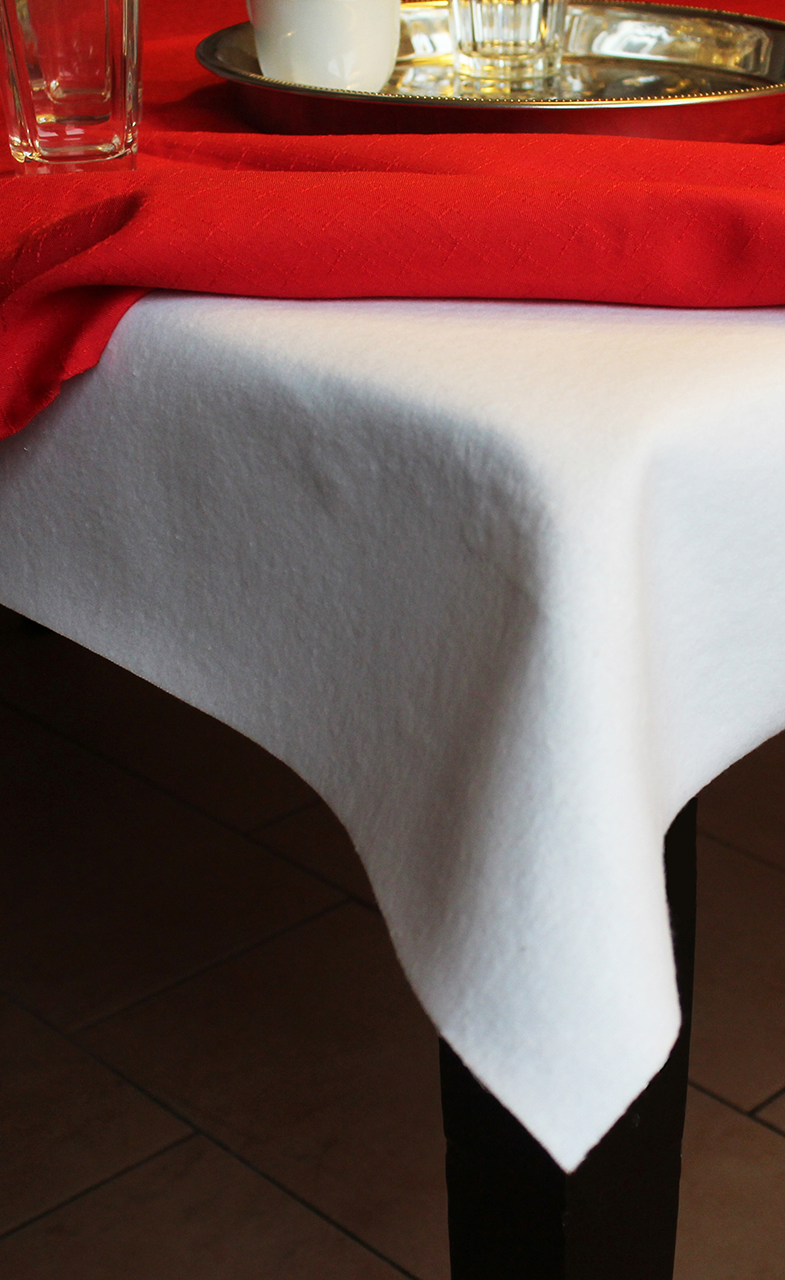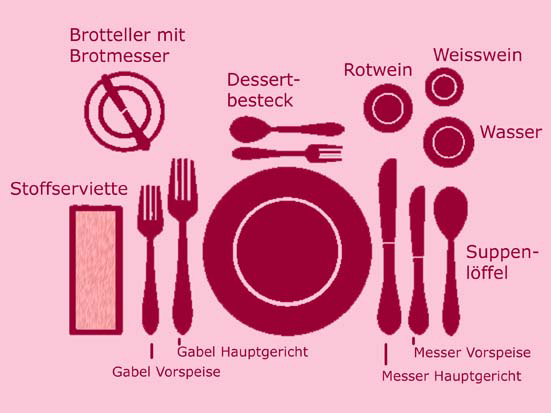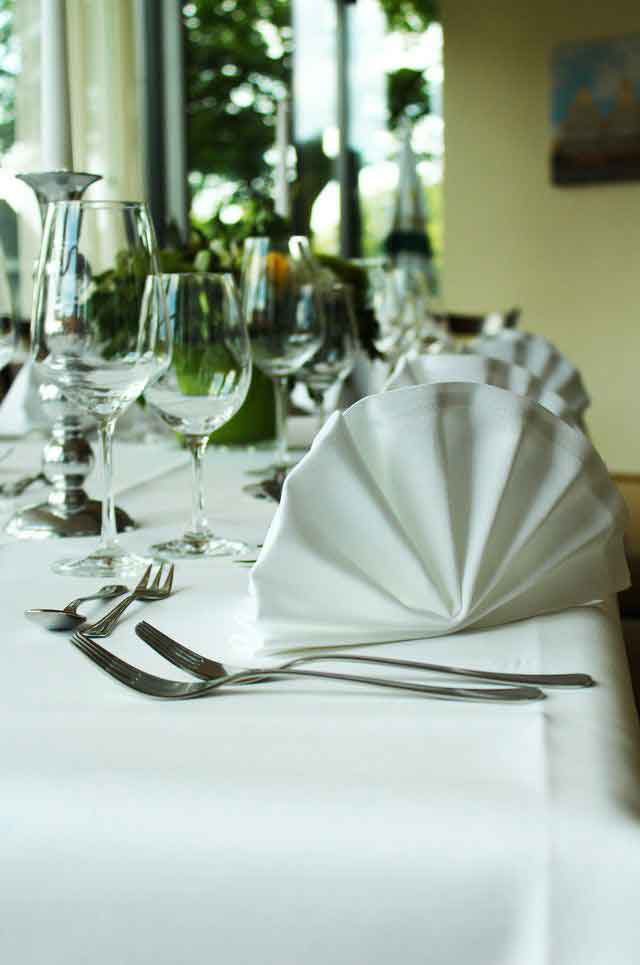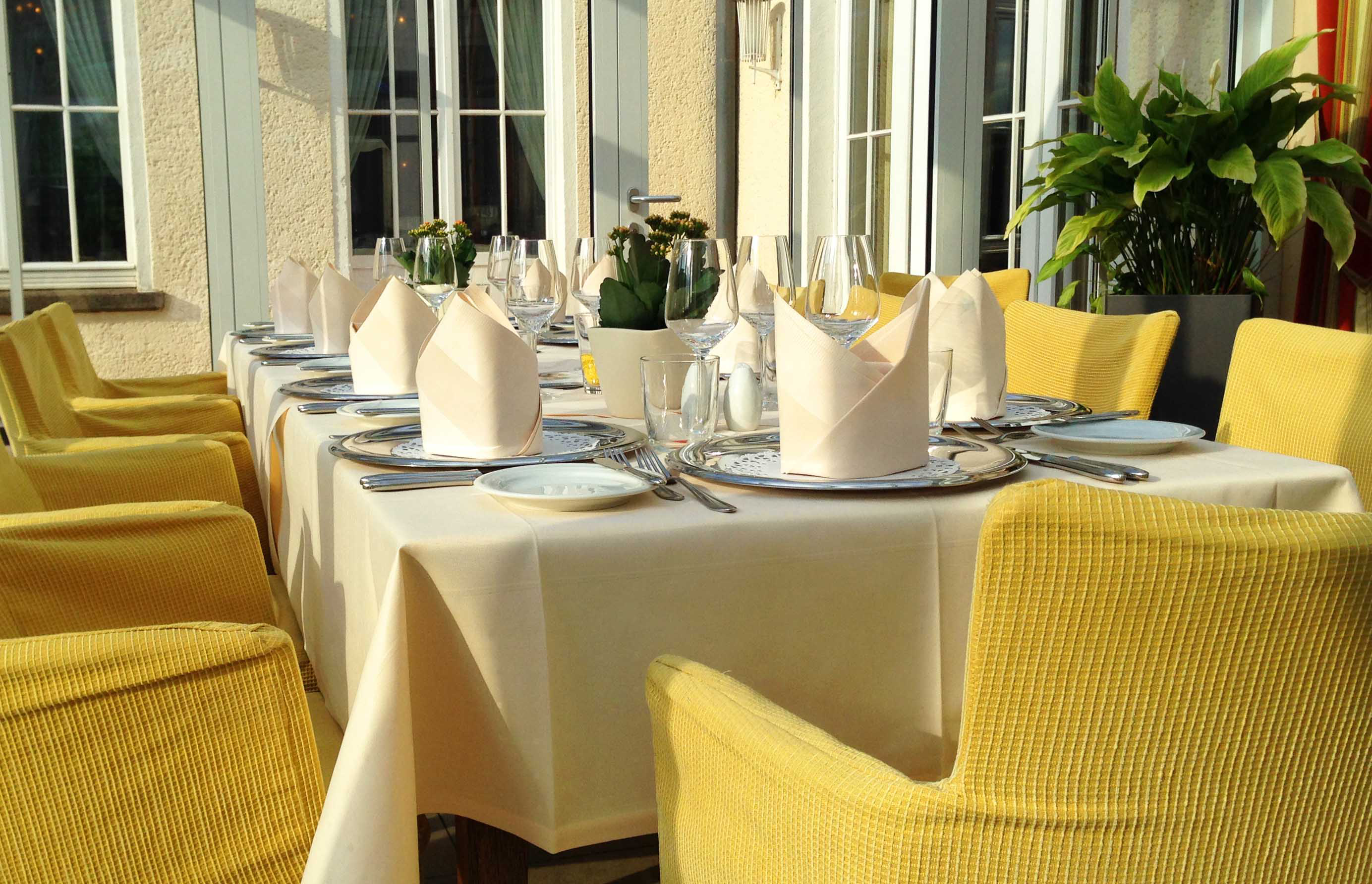Our Step-by-Step Table Setting Guide
| Proper Table Setting |
Sequence to Follow When Setting a Table |
|---|---|
| 1. The Table: | Arrange carefully and position chairs |
| 2. The Table Linen: | Select elegant table linen and ensure the right size |
| 3. Laying the Tablecloth Correctly: | Start with the table molton, followed by the tablecloth |
| 4. Systematic Table Arrangement: | Begin with charger plates and tasteful decorations |
| 5. Proper Table Setting: | Place dishes and cutlery in their correct positions |
| 6. Arranging the Glassware: | Position glasses appropriately |
| 7. The Final Touch: | Add real cloth napkins |
| 8. The Festive Meal: | Enjoy your elegant dining experience |
-
The Table: Arrangement and Chairs
The first step is to determine the placement of the dining table. It is essential that guests can comfortably approach the table from all sides.
Equally important is stability: a table that wobbles can greatly disrupt conversation. To prevent this, place a small piece of cardboard or cork under any uneven table leg before the meal begins. Once the table is steady, arrange the chairs.
Ensure that there is sufficient legroom for every guest beneath the table. It should also be decided whether the head of the table will be occupied. As a general rule, allow 60–80 cm of seating space per guest. In addition, make sure there is adequate distance from the wall and enough elbow room to guarantee a pleasant dining experience.
-
Table Linen: Selection and Size
A festive dining experience begins with the right table linen, particularly an elegant tablecloth combined with matching cloth napkins. White table linen always looks especially refined, and classic white damask tablecloths bring a sense of sophistication to any meal.
Large white damask tablecloths, such as those offered in our Libusch Tablecloth Shop, have the added advantage of being washable at high temperatures—unlike many colored fabrics. Even stubborn stains, such as wine stains or dark fruit juice spots, can usually be removed through boiling wash cycles or, if necessary, with chlorine bleach. After washing, the tablecloths return to a brilliant white, ready for the next festive occasion.
The size of the tablecloth is also key: it should neither be too small nor excessively large. The ideal size is determined by measuring the tabletop and adding an overhang of approximately 20–30 cm on each side. Depending on taste, a slightly longer drop can look stylish, but make sure guests still have ample legroom and that chairs can be pushed in without being hindered by the fabric.
Finally, remember: even the most beautiful porcelain will not shine if the foundation is inappropriate—or worse, wrinkled and stained. Fine linen tablecloths are always a particularly elegant and premium choice, while damask tablecloths provide timeless elegance and style.
-
Laying the Table Linen: Table Molton and Tablecloths

First, place a molton underlay, the table protector, on the tabletop before spreading the tablecloth.
The table molton cushions loud noises when dishes are placed on the table and creates a pleasantly soft surface. It smooths out edges and unevenness, prevents the tablecloth from slipping, and ensures a more elegant dining experience.
On this underlay, the tablecloth is then arranged.
A tablecloth features three folds, known as the upper, middle, and lower break. The upper break often casts a delicate shadow, so it should ideally be positioned near the light source.
When using large tablecloths such as those offered in our Libusch Tablecloth Shop, two people should always place the cloth to achieve perfect symmetry. Ideally, the upper break should align with the longitudinal center of the table, visually dividing it in half. Make sure the overhang is even on all sides.
Once placed, smooth the cloth gently by hand so it lies evenly on the molton without creases. If several tablecloths are needed for a long table, ensure the folds align to create a continuous line, overlapping by approximately 10 cm. When setting several tables in one room, the folds should run in the same direction. Adding center cloths, also called toppers, adds a festive touch. These should be placed diagonally across the center of the table, ensuring their corners never extend longer than the drop of the main tablecloth.
-
Setting the Table: Charger Plates and Table Decorations
With the preparations complete, the table can now be set. The sequence is as follows: dishes – cutlery – glassware – napkins. Each place setting begins with a charger plate. Allow 60–80 cm per guest to ensure comfort and avoid crowding. Silver-plated charger plates look especially elegant and, together with a white tablecloth, are part of any classic festive table arrangement. To make the setting process easier, rotate chairs 90° away from the table. This not only improves access but also helps prevent unwanted creases in the tablecloth. Next, add floral arrangements and candles. Symmetry is usually the most visually appealing choice. Decorate your table lavishly for a multi-course menu, which will require a variety of plates, cutlery, and glasses. The correct placement of each item is an art in itself—just as using them properly is. The menu and sequence of courses ultimately determine the arrangement of cutlery and tableware.
-
Proper Table Setting: Dishes and Cutlery
We now continue with arranging the cutlery. Silver cutlery has once again become highly popular, not only with traditional hosts but also with younger generations. Much like large, classic damask tablecloths, silverware represents timeless elegance.
 Cutlery is placed logically so that each guest finds the utensil exactly where it is needed. The general rule is to eat from the outside in, but the cutlery is always set from the inside out. Begin with the knife for the main course: it is placed to the right of the charger plate, with the blade facing left. The fork is positioned to the left of the plate, with the tines pointing upward. If no charger plate is used, the knife and fork must be placed far enough apart to comfortably fit a plate in between. When place settings face one another, knives and forks should align in a straight line.
Cutlery is placed logically so that each guest finds the utensil exactly where it is needed. The general rule is to eat from the outside in, but the cutlery is always set from the inside out. Begin with the knife for the main course: it is placed to the right of the charger plate, with the blade facing left. The fork is positioned to the left of the plate, with the tines pointing upward. If no charger plate is used, the knife and fork must be placed far enough apart to comfortably fit a plate in between. When place settings face one another, knives and forks should align in a straight line.
Next to the knife, at the same height, lies the soup spoon. All cutlery should be placed one finger’s width (approximately 1 cm) above the lower edge of the table. Moving outward, place the knives and forks for the starter course. For dessert, the cutlery – usually a spoon and a fork – is placed horizontally above the plate: the fork below with its handle pointing left, and the spoon above with its handle pointing right. Depending on the dessert, a coffee spoon and cake fork may be substituted.
If cheese is served as the final course, a dessert knife with its handle pointing right and a fork with its handle pointing left are positioned directly above the plate. Should bread be offered, a small bread plate is set to the left of the cutlery with a dedicated bread knife.
Attention: some dishes require special cutlery. These should either be pre-set or added later as needed. In general, specialty tongs, such as lobster or snail tongs, are arranged on the left. Specialty forks – including lobster, snail, oyster, or fondue forks – are placed to the right of the plate.
-
Correct Table Setting: Arranging the Glassware
The final step is the arrangement of the glasses. The golden rule: every beverage deserves its proper glass. Glassware is placed above the cutlery on the right-hand side, in the order of the drinks to be served. The glass for the first beverage is positioned furthest to the right. In a formal table setting, no more than four glasses should be assigned to each guest.
Rounded stem glasses are used for red wine; their large bowl allows the bouquet to unfold to perfection. White wine is served in smaller glasses, which help to keep it refreshingly cool. In addition to wine glasses, a water glass should always be included. If beer is served, a tulip-shaped beer glass is essential, as it promotes the formation of a fine foam crown in a freshly poured beer. For sparkling wine or champagne, elegant flutes are to be preferred over wide coupe glasses, as they preserve the bubbles for longer.
For all drinks, mouth-blown crystal glassware is highly recommended, as it harmonises perfectly with luxurious white damask tablecloths and fine silver cutlery.

-
Formal Table Setting: Cloth Napkins Are Essential
For a true festive dinner, cloth napkins are indispensable. Only fabric napkins give a meal a genuinely refined touch. Matching the tablecloth, the napkin is the finishing detail of your celebration. A damask napkin looks particularly elegant when placed in a napkin ring. Silver napkin rings harmonise beautifully with silver cutlery, while today’s trend also embraces unique, individual napkin rings, which add character and charm. If you choose not to use napkin rings, lightly starched napkins may be placed on the dinner plate – or, if the first course is already served, to the left of the cutlery or on the bread plate. Napkins can also be folded attractively, though overly elaborate folds should be avoided. Guests should never suspect that the napkin was handled too much during intricate folding.
💡 Pro Tip for an Elegant Table Setting
The most sophisticated option combines damask cloth napkins with high-quality napkin rings. This timeless duo enhances the elegance of damask tablecloths and creates a refined atmosphere that impresses every guest.
-
The Festive Dinner
Now it is time to welcome your guests. Once everyone is seated, the meal begins with the outermost cutlery – usually the soup spoon. Remember: wine is poured only after the soup has been served. The host moves clockwise around the table, pouring wine from the right-hand side. After each course, the plate along with the used cutlery is cleared. If bread is served, the bread plate and knife are removed after the main course. Dessert cutlery is then laid either to the left and right of the plate or above it, depending on the menu. We wish you a delightful dining experience!
Why Should a Table Be Set in the Correct Order?
Here are the most important reasons at a glance:
- Hygiene & Cleanliness: Following the correct table-setting order ensures that all elements remain spotless and presentable.
- Efficiency & Time-Saving: A structured sequence prevents unnecessary corrections and saves time when setting the table.
- Aesthetics & Presentation: A neatly laid table enhances visual appeal and creates a pleasant dining atmosphere.
- Practicality & Functionality: Cutlery, plates, and glasses are placed intuitively for the guests, making dining effortless.




